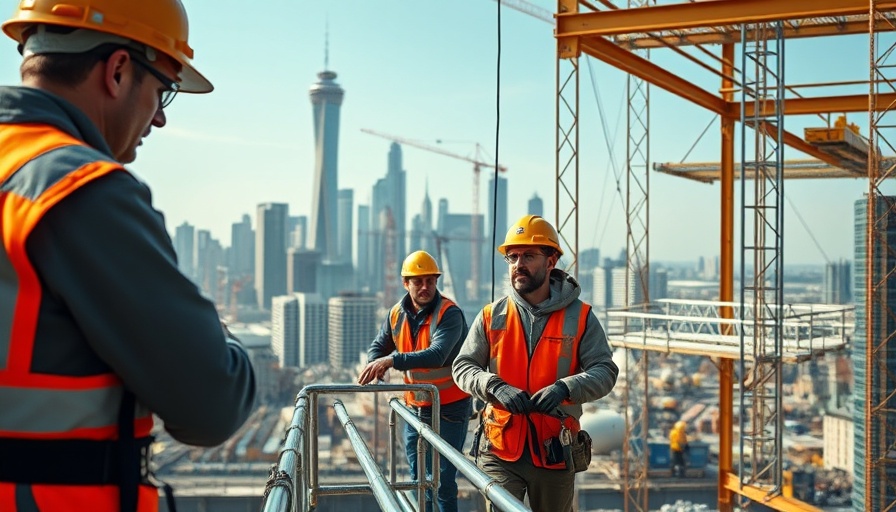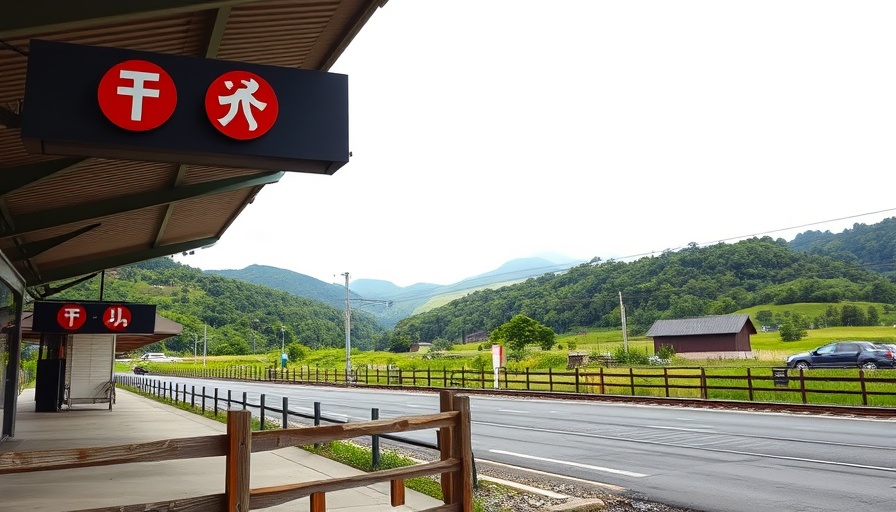
The Rising Tide of Construction Costs
In January, construction input prices surged by 1.4%, marking the most significant monthly increase the industry has seen in two years. This trend not only raises questions about the sustainability of ongoing projects but also reflects the broader economic implications of impending tariffs on key materials. The Associated Builders and Contractors (ABC) have reported that these price hikes leave local contractors uneasy and signal a troubling shift in the construction landscape.
Tariff Anxiety Drives Early Material Purchases
In anticipation of potential tariffs, contractors have raced to secure materials, further inflating costs. The fear of increased tariffs has led to a near panic, as builders look to hedge against further price hikes. According to Anirban Basu, ABC's chief economist, the overall cost of construction inputs is now 40.5% higher than in February 2020, primarily driven by energy costs alongside steel and aluminum tariffs. Energy issues, particularly rising crude petroleum and natural gas prices, have compounded the material cost crisis.
The Historical Context of Tariffs and Construction Prices
This surge in costs is not an isolated incident but a pattern consistent with previous tariff implementations. For instance, Trump's tariffs have historically led to price increases in several sectors, with construction materials particularly hard hit. The National Association of Home Builders has underscored how tariffs on critical supplies—30% of which are sourced from imported lumber—have raised prices and put pressure on buyer affordability in an already strained housing market.
Impacts on Home Affordability and Economic Access
The consequences of these tariffs extend far beyond construction sites—they ripple through the housing market, where home prices are already at record highs. With tariffs levied on various imported materials, prospective homeowners face steeper prices just as they combat high-interest rates and low inventory. Analysts are increasingly alarmed that these economic pressures could further harden the entry barriers for first-time buyers and exacerbate an already existing housing crisis.
The Role of Energy Costs in Construction
Energy prices are an inescapable part of the construction cost equation, affecting everything from material transportation to the manufacturing of the goods themselves. Tariffs, while intended to protect domestic interests, often result in higher energy costs being passed to consumers. As energy supplies are constrained and costs rise, these increases are likely to spark further inflation in building costs, a trend threatening the broader economic recovery.
Counterarguments: Potential Benefits of Tariffs
While the overwhelming narrative surrounding tariffs paints a bleak picture, proponents argue that tariffs can also encourage domestic manufacturing. By increasing costs on imported goods, tariffs may spur local production which could ultimately stabilize prices in the long run. Yet, the immediate effects typically manifest as increased costs for consumers, potentially negating these projected benefits.
Looking Ahead: Future Trends and Economic Projections
As the construction industry navigates this turbulent landscape, stakeholders must prepare for the potential long-term effects of current policies. It is crucial for contractors, builders, and policymakers to advocate for regulations that prevent erratic pricing fluctuating while simultaneously ensuring stability in housing affordability. Should these trends continue, they could significantly shape the construction sector and the broader economy for years to come.
This evolving scenario underscores the need for a strategic dialogue between government, industry leaders, and communities to drive sustainable solutions in construction and housing. With rising material costs, the focus must remain on developing a more resilient approach to tackle future challenges, reshaping how we perceive value in the construction industry and its contributions to economic progress.
 Add Row
Add Row  Add
Add 




Write A Comment